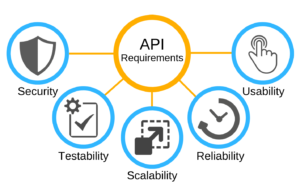Hey guys, welcome back to the Flutter world! So, today’s topic is whether Flutter is better or React Native?
What do you think? Give us your feedback!
Coming back to the topic, is Flutter a better option or React Native to use for developing applications?
Flutter VS React Native
With the advent of frameworks that can create native apps without using Swift for iOS or Java for Android, creating cross-platform mobile apps is a must these days.
The two most trending cross-platform mobile development frameworks that are being used to create thousands of mobile apps today are React Native and Flutter.
If you need to choose in between Respond Native and Flutter, which one should you choose?
Actually, there is no precise answer to this question. The answer varies depending on the needs and use-cases for your company.
That’s because with their own set of pros and cons, both Respond Native and Flutter are strong contenders.
Being a Flutter developer myself, I have attempted to write this article without any prejudice. So, don’t worry! I will share a fair content.
Walking through the basics…
Both React Native and Flutter are frameworks that allow developers to build mobile apps that run across multiple platforms smoothly.
Though, React Native is the most widely adopted mobile tool at present, Flutter has been steadily gaining popularity and loyalty since 2017.
Flutter is one of React’s major competitors in 2020 and is expected to expand further in the future.
Flutter and React Native Brief Overview–
React Native is a framework developed by Facebook for cross-platform mobile development. Android, iOS, Site, and UWP are targeted.
React Native enables developers to use React ‘s power combined with different platform functionalities, easily combining the desired features.
This framework also helps developers to design user interfaces with elements that each platform looks native to.
Flutter is a toolkit that targets mobile, desktop, and web platforms for software creation. It was developed by Google, and it is an open source likely with React Native.
This framework helps developers to build cross-platform apps that look equally good on both new and older versions of the operating system of a smartphone and have a pleasant feeling because of a wide selection of widgets available. In comparison to native development, Flutter greatly reduces the time required to create an app.
Components of Native
The essential elements for creating an app, namely UI rendering capabilities and application API access, are provided by React Native. React depends on third party libraries for other functionality, like accessing native modules, which is typically less convenient than getting all the resources you need in one bundle.
In addition to the standard system of API access and simple UI rendering, Flutter provides various libraries, navigation, testing tools, and a comprehensive collection of widgets to create visually pleasing interfaces with minimal effort.
Flutter helps developers to forgo the use of third-party libraries in certain instances. Typically, the functionality that the system comes with is to adequately handle all required tasks and meet the specifications of the design.
Community
React Native retains its place as the absolute winner in terms of culture. This system is older than Flutter, and it is more comprehensive, engaging, and generally inspiring to the community that contributes to it.
Flutter vs. Native React: Which to Pick?
Both Flutter and React Native are amazing frameworks that can make it simpler and quicker to create a cross-platform application than with other native tools.
Flutter loses points to JavaScript ‘s familiarity in comparison with React Native, because Flutter uses Dart, a programming language that developers seldom use.
Therefore, Respond Native could be a better option if you already have a team of seasoned JS developers.
But wait, Flutter is no less as it provides several customizable widgets at the same time that can be used on both Android and iOS.
This eliminates the need to put significant effort into styling distinct elements of the UI of your app. As it is compiled for native libraries, Flutter also generally performs better and faster.
If you need a striking and highly customizable design or, alternatively, if you are already familiar with Dart instead of JavaScript, choose this choice.
Spending more time on learning Dart will boost Flutter ‘s popularity.
The future of Flutter VS Respond Native is difficult to forecast as all these systems have their benefits and drawbacks.
React Native could be the basis for pre-existing software, but Flutter has taken the world of developers by storm. Since its inception, it has steadily gained prominence. It is indeed becoming more and more sophisticated and preferable for cross-platform app development with the advancement of the Flutter Software Development Kit(SDK).
At certain stages, flutter overtakes Respond Native and vice versa. Both provide a powerful platform for the creation of apps. Apps that are cross-platform allow you to expand your scope.
CONCLUSION
Although React Native today has some strong points, Flutter is an emerging contender, and in the coming days, I ‘m sure it will be in it’s booming pace!
Unless the RN community keeps updating itself, Flutter will overtake React Native as the ‘leading cross-platform app development framework.’
references: cuelogic.com



